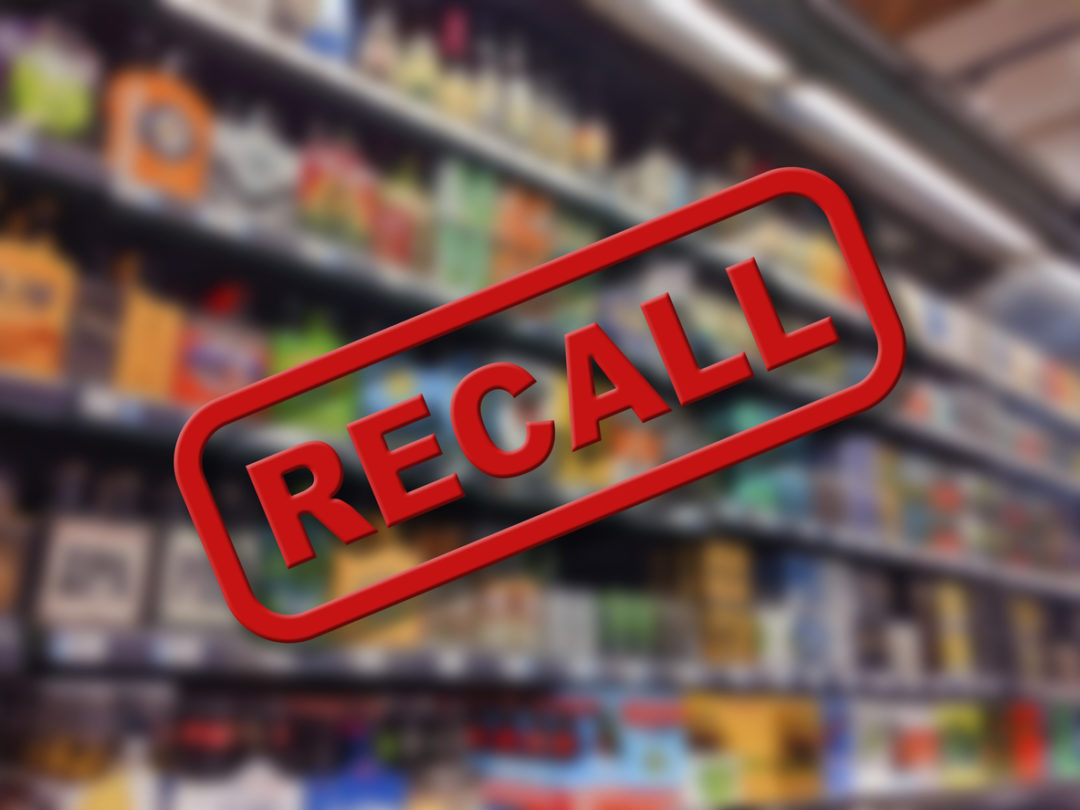
The number of food recalls has hit a five-year high, and the Food and Drug Administration has already issued more than 50 recalls in 2024. Recent incidents involving kielbasa, frozen dumplings, queso fresco and cotija cheese and charcuterie meats have sparked concerns about the frequency of food recalls and how they’re being managed.
The U.S. has recently seen numerous large, multi-state food recalls. Already this year, foods have been contaminated by listeria, Salmonella, lead, foreign objects, and non-food grade oil. In addition, the mislabeling of allergens is increasing recall frequency.
Companies acting alone, instead collaborating with supply chain partners, are only prolonging the exposure of compromised products in the marketplace. It's becoming increasingly challenging for organizations to justify inefficient recalls, given the communication and technology tools available to address these issues.
Improving Recall Management
Following are some actions that the food industry must take to better manage recalls.
Shift from an individual company process to a supply chain process. This is an important paradigm shift, and one that all companies across the supply chain must adopt. Individual brands should stop acting in isolation, and address recalls as a supply chain-wide exercise. This will help to track the path of compromised products more quickly, and make it possible to recall them efficiently.
Improve supply chain visibility. When food products are contaminated, companies must identify which products were involved, what happened, the origin of the problem, and the journey that the tainted products traveled. It’s critical to have real-time information to manage the recall efficiently and effectively, minimize damage and restore brand confidence. Food businesses should use the most innovative tools available to track data from point of origin to point of sale and consumption. Lacking proper processes, food businesses could experience massive legal, financial and reputational damage.
Prioritize speed and accuracy. Organizations need better transparency, innovative tools, and integrated communications to provide recall alerts quickly and properly.
Standardize data. This is essential to accelerating the protection of people. Currently, there’s no common information set that everyone uses to communicate across the industry and supply chains, which can cause confusion and delays during time-critical recalls.
Standardize the recall process. This allows the entire supply chain to obtain faster, more accurate recall notifications, so that they can identify and pull contaminated products before they can sicken consumers.
Conduct recall simulations. Many organizations are unprepared to handle recalls. Everyone across the supply chain — including manufacturers, processors, distributors and retailers — should conduct mock drills to better prepare for actual incidents. Without these simulations, companies can’t identify and address process gaps, or feel confident they’ll know what to do during an actual recall situation.
Be aware of changing regulations. Food safety regulations are complex, ever-changing, and often vary among countries. Food businesses must be compliant with these rules and regulations. Relying on tech tools, and having a central repository for regulatory information, can help with this important effort.
Preparing for a Recall
To prepare for when a recall happens, companies should do the following.
Create a recall plan in advance of an incident. Stressful situations frequently trigger uncertainty, so it’s helpful to have a roadmap to follow. The plan should list the necessary steps that must occur during a recall. Additionally, every organization should designate a recall team and assign roles and responsibilities for each person, such as who will alert employees, notify supply chain partners, handle media inquiries and manage customer feedback.
Train employees. Food businesses must ensure that all employees understand the recall process. This means prioritizing proactive, continuous training. Make recall education part of every new employee’s onboarding process, and hold regular reviews of the protocols. Ensure that everyone understands their roles, and is well-prepared to spring quickly into action.
Hold recall simulations. Staging a mock recall can be tremendously valuable, allowing employees to practice what they’d need to do during an actual incident. These simulations also allow company leaders to address process gaps in preparation for a real recall.
Work with like-minded suppliers. As the old adage goes, you’re only as strong as your weakest link. If only certain organizations in a supply chain prioritize food safety, they can be vulnerable if others don’t follow similar gold-standard protocols. A single mistake — such as holding foods at improper temperatures, allowing a sick employee to handle foods with unwashed hands, cross-contamination, use of non-food-grade materials, or dropping foreign materials into the foods — can put consumers and businesses at risk. Work only with trusted supply chain partners that prioritize food safety, quality and compliance. And always keep up-to-date product records, by lot identifier and production date.
Acting During a Recall
If, despite the best efforts of your supply chain partners, an incident occurs that contaminates food products, act fast. During a recall, companies should do the following.
Exchange complete and accurate information. All organizations along the product’s journey should be notified. Determine and communicate what happened, which products were impacted, and exactly where they were distributed. Tech tools like blockchain can be instrumental in tracking products’ journeys and pinpointing exactly where contaminated products are located.
Disseminate information quickly. Ensure that every organization is aware of the recall and acts immediately to pull contaminated products. If potentially tainted products have been sold, there needs to be immediate communication to consumers as well.
Pull impacted products. Organizations should have systems in place to record what’s been pulled, and be certain that all recalled products are accounted for. If recalled products have been widely distributed, this could be a multi-state effort.
Communicate to key audiences. Communicate with key stakeholders — including supply chain partners, employees, consumers, regulators and the media — with messages tailored to each audience. Ensure that all employees are aware of the recall and following proper protocols. Reach your customers through the traditional and social media, email, and your website, explaining what has happened and providing a clear call to action (for example, “return all impacted foods to the point of purchase for a full refund”).
Focus on the facts. Don’t get defensive or assign blame, and continuously emphasize your commitment to food safety.
Be transparent. When it comes to recalls, honesty is the best policy. A poorly handled recall can damage an organization’s reputation, so it’s essential to properly control the narrative. Your key audiences value transparency. Explain exactly what happened and what you and your supply chain partners are doing to ensure consumer safety.
Rely on modern technology tools. These provide faster and more accurate notifications about recalls, allowing companies to act immediately and minimize risks to customers, supply chain partners, and their reputation.
Cooperate with regulatory agencies. Communicate openly, so that every company impacted has real-time, accurate updates on recall progress and calls to action. Being cooperative can help streamline the recall process and mitigate potential legal, financial and reputational risks.
Monitor customer feedback. Stay positive, provide facts, be clear about which stores may have sold recalled products, and encourage specific actions. Respond quickly and professionally to customers’ social media comments and emails. Reassure customers that their safety is your top priority, and that you’re committed to maintaining gold-standard protocols.
Apply lessons learned. After the recall has been resolved, review your response process. Is there anything that you’ve learned from this experience that could improve the way you manage future recalls?
Proper preparation, cooperation with supply chain partners and regulatory bodies, and clear communication are essential for successful recalls. Act quickly but calmly, following your incident response plan. Be transparent and reassuring, emphasizing your organization’s ongoing commitment to food safety and quality.
Roger Hancock is chief executive officer of Recall InfoLink.







